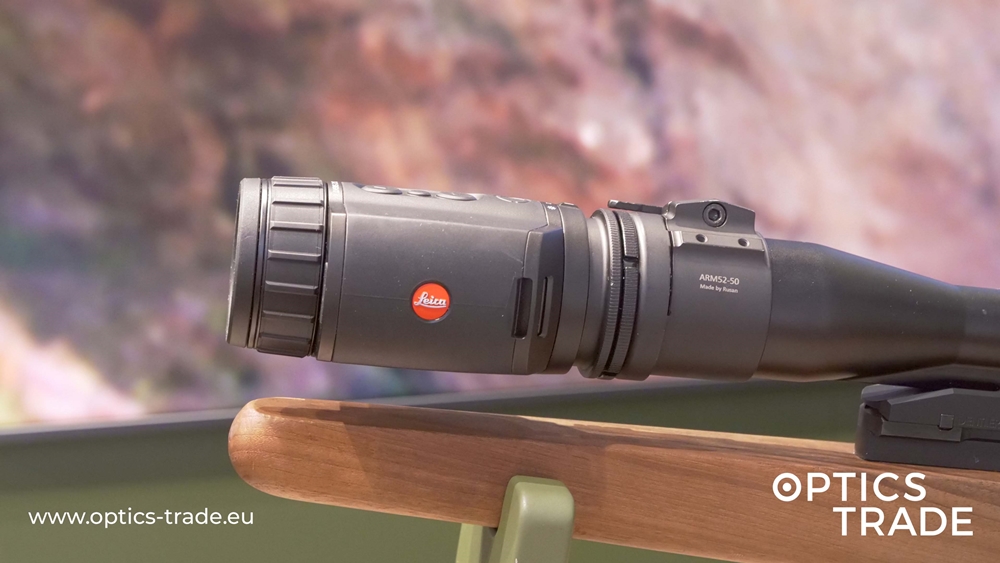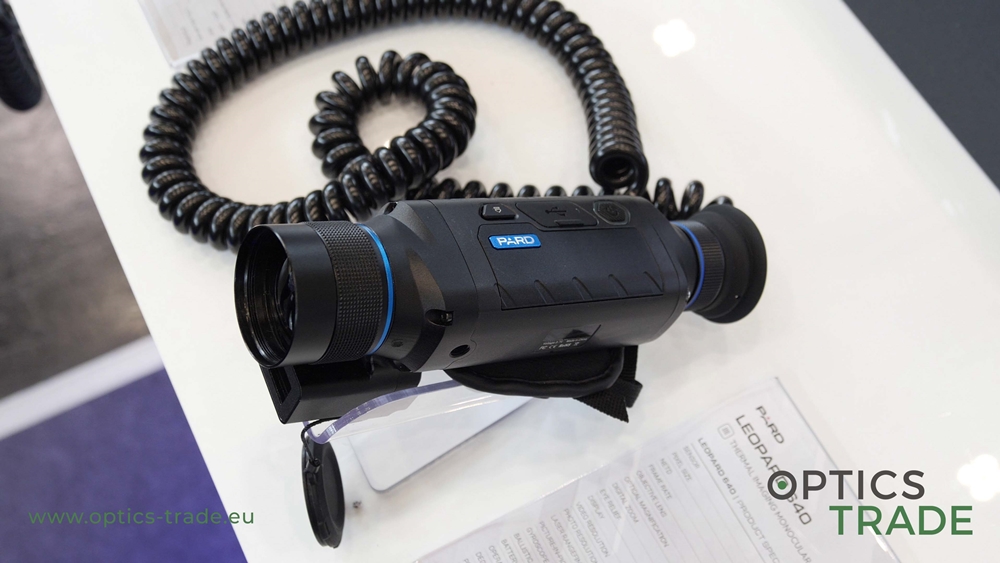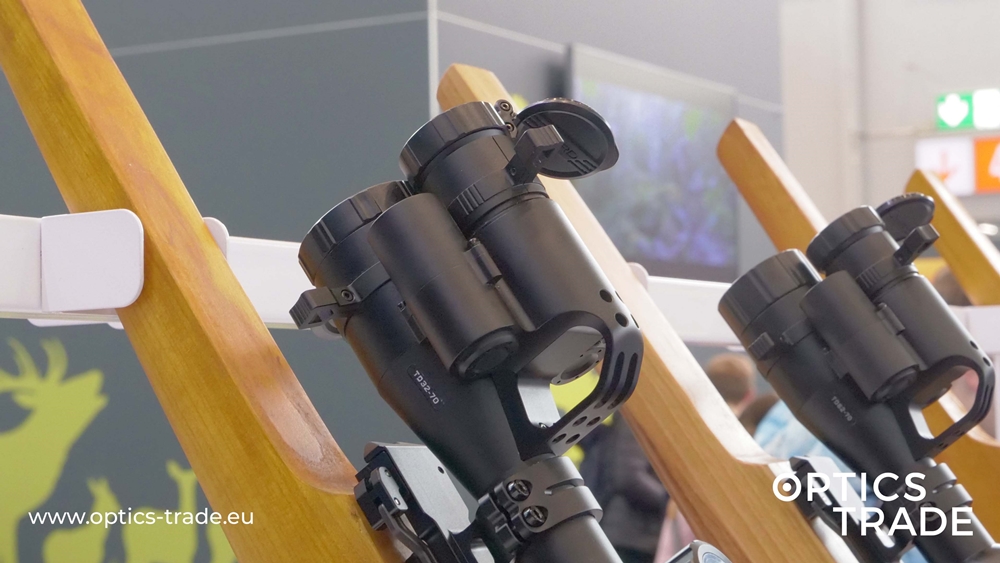Hello and welcome to another episode of Optics Trade Debates. We continue on our way through explaining the basic attributes of all types of night vision optical devices that are available on our webpage. This particular episode will focus on thermal imaging binoculars. As of 2019, there are only a couple of models available. Still, they garner a lot of interest from customers so it’s only fair to expand on this topic.
Pulsar’s Accolade XQ38 and Accolade XP50 thermal imaging binoculars were a hit product of 2018. Along with ATN, they are the two manufacturers to have lowered the price of these NV products enough to make them available to civilian users. Another successful company that specializes in night vision optics is the Canadian GSCI.
Thermal imaging binoculars are ordinary thermal imaging devices, just like monoculars or scopes and clip-on systems. The only change is in the physical form as they allow the customer to use both eyes. That means that thermal imaging binoculars use two displays or only one display in combination with a of system prisms. But there is no actual difference in resolution or technologies employed.
Thermal imaging binoculars are also more expensive than other devices of this type. They tend to cost about 600 or 1000 euros more than a monocular device of comparable capabilities. The reason behind the price increase is the addition of another display, a second eyepiece and there’s also bigger housing. Obviously, all that added comfort costs extra.
There are many conflicting opinions to which device form is the best. One thing that works in binoculars’ favour is that all thermal imaging devices use bright displays. Users of devices that only require one eye for observations face an obvious problem. Only one of their pupils dilates when looking at a bright display, while the other remains contracted due to the low light natural environment and for the user, this artificial contrast can be slightly uncomfortable or even disorienting in some cases. Binoculars solve that issue since the user employs both eyes and there’s is no difference in pupil diametres.
Still, some users claim that monoculars enable a faster transition from observing to shooting. That’s because they use one eye for NV monocular and another to look into the riflescope. In that case, they don’t have to wait a moment before both of their eyes accommodate to ambient light. In the end, it comes down to the user’s personal preference.
The disadvantage of binoculars is in the added weight and bulkier form. At the start of 2019, most devices use thermal detectors of about 380×280 or 640×480 pixels. The same goes for displays. Devices with bigger displays are not common. In fact, the few thermal imaging devices with a display resolution of 1260×800 that are sold on the civil market are also the most expensive options out there.
As we already said, thermal imaging binoculars use the same technology and work just like all other devices in this category. They detect heat and with that, there is no need for an IR illuminator. These optical devices work just as well during the day as they do during the night. This dual use gives them added versatility.
Thermal imaging binocular also offer really long detection ranges. If you compare them to conventional night vision optics, where seeing anything beyond 300 metres is made difficult, thermal imaging devices are definitely the way to go. With the latter, the user can detect a warm object or an animal 2 kilometres away.
But it is also important to point out that with the advantage of range, a little bit of recognition is lost. In other words, whereas conventional NV optics show the entire object, thermal imaging devices can only detect heat, as in warm parts of an animal, for example. That means that accessing the trophy of the game is made almost impossible with thermal imaging devices because animal parts like antlers and horns are not warm and therefore will not show up on the display.
The last 5 years where a revolution when it comes to the improved resolution of thermal imaging devices. This is another feature that will only get better in the future. The pixel size is also shrinking. Pulsar Accolade thermal imaging binoculars use 17-micron pixel pitch but there have already been some recent launches of devices with 12-micron pixels.
What’s also interesting is that some thermal imaging binoculars intentionally mimic the use and handling of classic mechanical binoculars. They utilize a focusing wheel in the centre and dioptre compensation rings around both eyepieces that are no different than the ones on daytime binoculars. Some even allow the user to adjust the interpupillary distance.
Now, let’s move on to magnification powers that we can find in this category of products. The magnification of analog devices largely depends on the diametre of the objective lens and the quality of the sensor but it starts at 3x. But all thermal imaging devices use digital technology, at least on the civil market.
With digital variants, the magnification power can be adjusted by accessing the user interface. It is also often referred to as ‘digital zooming’. Pulsar’s Accolade XQ38 offers zooming powers of 3-18x and Accolade XP50 has them set at 4-20x. But the basic idea with digital NV devices is that the user is magnifying the image, thus enhancing the pixel size. That means that the more powerful the magnification, the lower the quality of resolution.
Thermal imaging devices are based on heat detectors in contrast with NV devices that rely on IR illuminators. However, there’s been quite some talk about fusion devices that combine both concepts in a single device. Perhaps this too is something to look out for in the future.
Another innovation is the incorporation of laser rangefinders into thermal imaging devices. Pulsar is already making strides in this direction. Their plan is to make Accolade products with a built-in LRF available in 2019. In the future, however, all thermal imaging binoculars are expected to have laser rangefinding capabilities. The reason for it is that accessing the distance can be very hard when using a thermal imaging device.
Users will find that the image and depth impression are entirely different when observing the same object with plain sight than when looking through thermal imaging binoculars. When using the latter, the hunter will get the impression that animals are further away than where they are in reality. The margin of error when making these distance approximations is especially a problem when you consider that thermal imaging devices can detect warm objects that are 2 kilometres away. It’s only reasonable that a hunter cannot rely on their sense of depth alone to make a perfect shot. Indeed, integrated laser rangefinders will be more than welcome addition.
Most devices already offer an alternative method of accessing distances. That is, the user can have their pick between 3 different animal observing modes (e.g. hare, boar and red deer). There are two lines for their height. When the user is observing the animal with the help of a menu, one line is placed horizontally to the ground, while the other marks the highest point of the animal. The device then approximates the actual distance but that’s a highly unreliable method since individual specimens of the same animal come in different sizes and it’s difficult to set those lines properly anyways.
It’s also true that in the case of analog devices there is always a problem if the user exposes them to a bright source of light by mistake. But there is no need for these concerns with thermal imaging devices since they will continue to operate just the same.
We already posted separate Optics Trade Debates on thermal imaging technology, sensor resolution and pixel sizes, and episodes dedicated to the explanation of calibration modes, refresh rates and so on. If you like to know more about thermal imaging or optics in general, take a look at our Youtube channel since this debate focuses solely on the binocular form.
Thermal imaging binoculars are especially useful in hunting, surveillance and security sector in general, military and similar. Of course, the majority of users are hunters who need binoculars that they can rely on in low light situations. But once again, note that thermal imaging binoculars on their own are not optimal for trophy hunters. We suggest that they consider analog NV devices with the addition of a thermal imaging clip-on and get the best of both worlds.
This is everything for today. Thank you for your attention. Please like and share this video if you found it useful. If you have any questions or feedback, feel free to send us an email or leave a comment in the section below. We love to help. Subscribe to our YouTube channel for more content. See you next time!
Products mentioned:
Thermal Imaging Binoculars: https://www.optics-trade.eu/en/thermal-imaging/thermal-imaging-binoculars.html





I still believe that in long range and dark, night vision scopes are better than these. Thermal imaging is a good technology to be sure before shooting though. Love to hear your thoughts on this.